TID:
Melissa, great to feature your work with TID.
We appreciate you being willing to share your insight.
MELISSA:
I'm really excited by the idea behind this blog, so thank
you so much for asking me to take part in this.
TID:
You have a number of strong, intimate pictures (it was hard
to pick one), but we'd like to feature this picture from the
Kids in Chaos story.
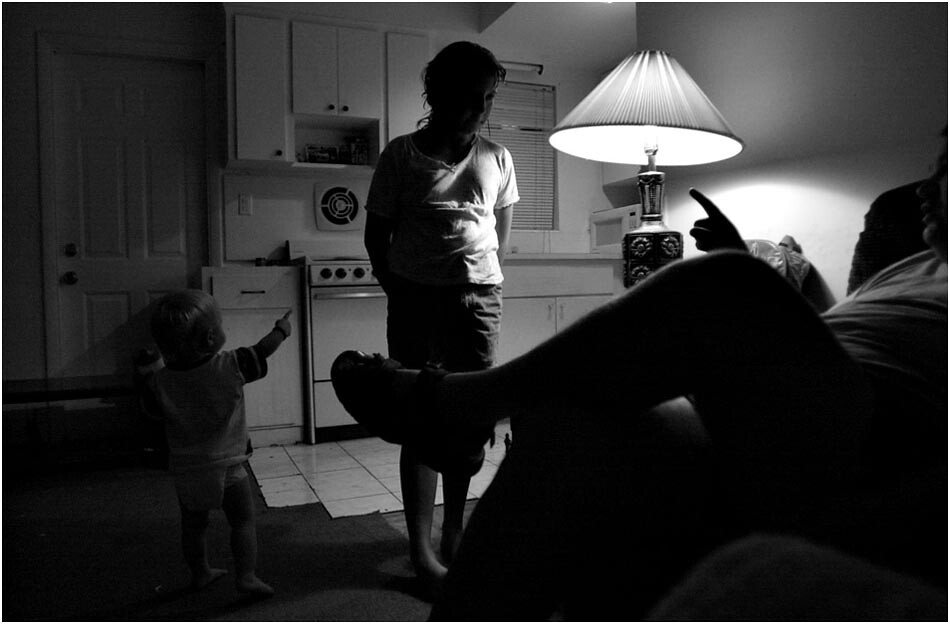
Your access to the family was moving.
If you recall, I emailed you after it was published and asked
you how you gained such intimacy. You didn't know me
back then, but were kind enough to respond.
And now years later, we're back and retracing it, but this
time sharing some of your insight with a larger audience
than one.
Lets now talk about the backstory of the image.
Tell us how you first met this family, and how you began
the story.
(TID NOTE: The pictures in this post were the images taken
moments before and after the featured image)
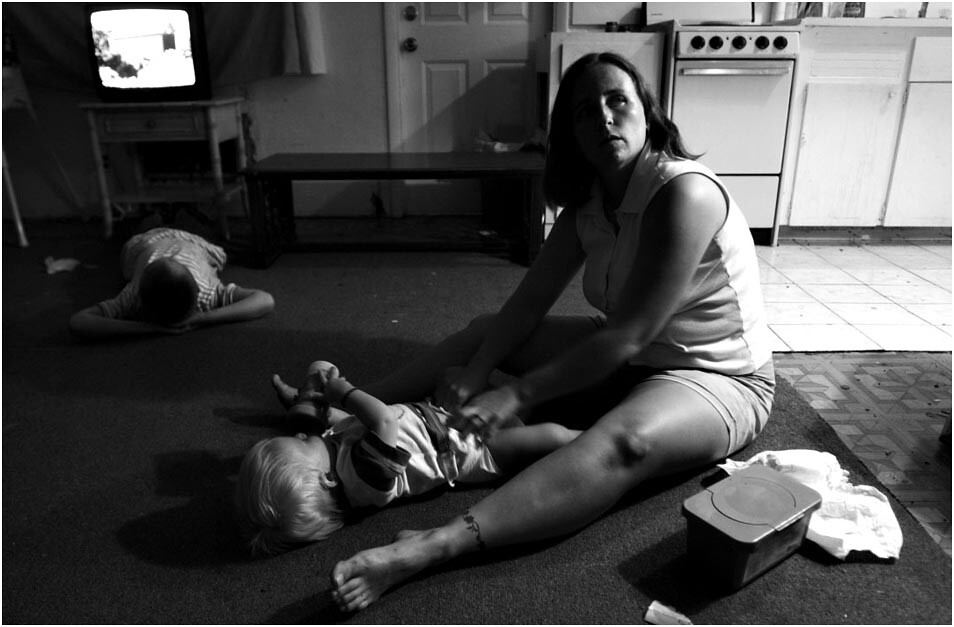
MELISSA:
I was assigned to photograph a daily story about how
people, especially families, were given weekly vouchers
to stay in nearby motels since many shelters were full.
The initial assignment just said to meet this family at
the motel. I had no idea what I was getting into. From
the moment I walked in, the family accepted me.
They were incredibly open and unguarded in their moments.
I had kids hanging off of me by the time I was leaving,
calling me Aunt Melissa. The story was running the next
day, and for the paper's purpose their story was over, but I
had promised the kids that I'd come back the following
afternoon so they could show me how they'd learned to do front
flips in the motel's swimming pool.
I made some time in between assignments the following day to return.

When I pulled into the parking lot, I saw a few of the kids
outside, and as I was getting my camera out of the back of
my car, one of them said "Aunt Melissa, Aunt Melissa -
we're moving, we're moving."
I ran up stairs to find Mark and Dempsey (the parents).
Evidently, the motel management had beef with them
over how clean their room was, and kicked them out.
So the shelter that had initially placed them, sent a van
over to move them into transitional housing.
I called the paper and told my assignment editor that this
was a bigger story than we had thought, and asked if there
was anyway I could get out of my next assignment. I
wanted to ride with them to transitional housing to see
where they were being moved and more importantly to
figure out why.
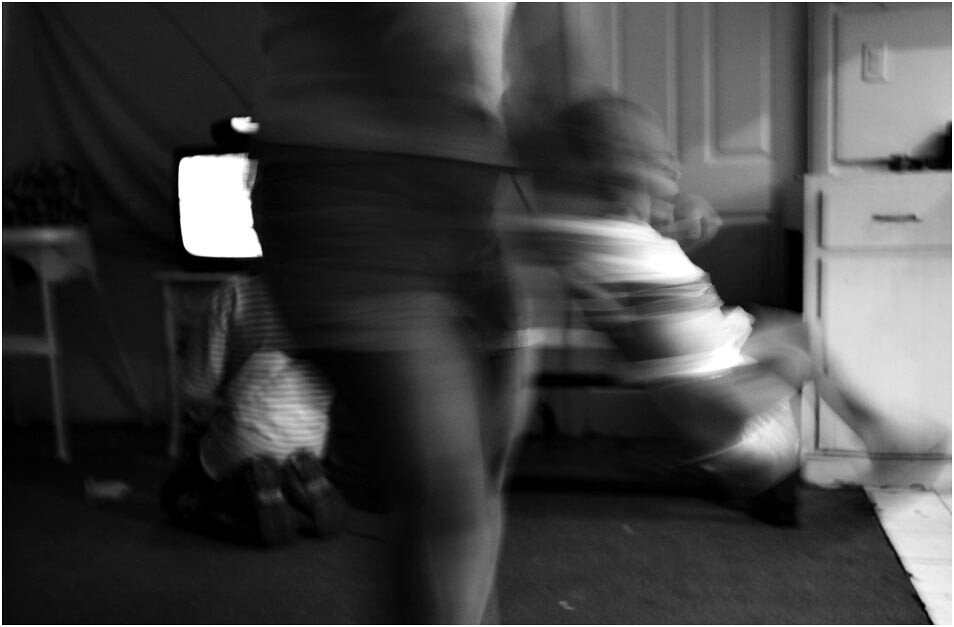
I had only been at the paper for about a year at that point,
and had never really worked on a big story before. I sensed
that there was something more there, but wasn't sure what
yet, all I knew was my gut was telling me to follow them.
(Note: I was deeply moved by a story Daniel Anderson at
the Orange County Register had just done the year before
on Motel Children. I had a friend working at that paper and
he sent me a copy of it when it published. It went onto win
the Community Awareness Award in POY, and was a Pulitzer finalist.)
TID:
Access is built over time, and it's clear to me that you spent
a lot of time developing trust with the family. Can you let us
know how long you think you spent in total on the project
(and with this, can you talk about your time management)?
MELISSA:
According to the digital files, the first day was with them was
May 17, 2001. I worked on it through the end of the year,
because just after Thanksgiving, the Stones moved up to
Baltimore with family to get back on their feet. I made one
trip to Maryland to finish the interviews, because at this point
I was writing the story, too.
So I worked on it for about 6-7 months.

I spent a lot of time with them, just hanging out, camera
down, talking. The Stones lived in 5 or 6 different places
while I was working on their story, and there was no real
way to get ahold of them - part of the reason I'd drop by
so much was so I didn't lose them.
They were good about calling me when stuff was happening,
but it was always from a nearby pay phone, and there was no
way to call them back. I knew it was important that I was
there as much as possible, but I also knew I needed to dig
deeper and find what pictures I needed to make.
It was important for me to have an honest conversation
with when I needed to be there for in order to tell their
story fairly. Early on, that's what a lot of my visits were.
Conversations.
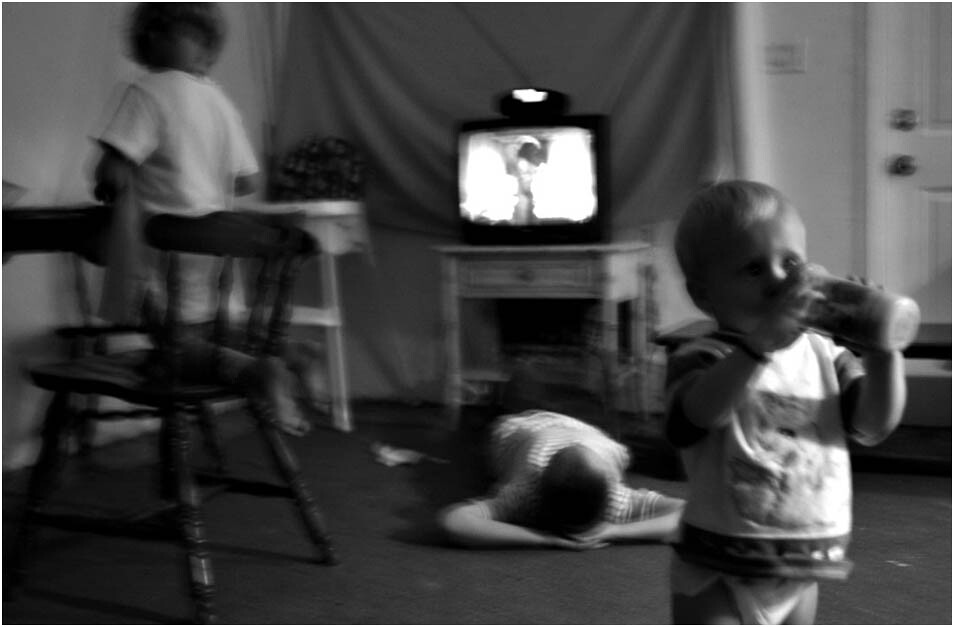
TID:
Now that we have a good idea of the time and origins
of the story, lets move to the picture. Can you tell us
where this picture fits in with the story, and about the
time leading up to the image.
MELISSA:
I'd try to schedule my time so I could put myself in
the right situations to witness those bigger moments,
but I'd also make it a habit of dropping by their house
after I got off work, to shoot the moments in between.
That's when this picture was made - after work one night.
The time stamps show I was there for 90 minutes, from 7:30
until 9 p.m. I shot 134 frames that night - most of them
horrible, A lot of them blurry and out of focus.
I was just responding to the moments of the chaos, and trying
to push the heck out of a Nikon D1 in really low light situations.
TID:
Given this, can you talk about the moment of the image,
and please include how you were feeling at the time.
MELISSA:
The caption on the photo read: After using a cuss word in
front of not only her parents, but also her younger brothers
and sisters, Meghan, 10,gets a lecture from dad and a less
harsh, but similar gesture from her youngest brother Matthew, 1.
It happened so quickly, and it was over before I knew it.
I literally shot two frames of this scene.


I was in the other room photographing Dempsey changing Piglet's
diaper, so I don't even remember Piglet being up and in this frame.
He was at that stage though where he was mimicking a lot of
words and gestures that the others did, so it was a really pleasant
surprise to see him there in the bottom corner of the frame,
mimicking his dad pointing at Meghan. She had a lot of
pressure on her being the oldest, and the funny thing is,
I think she was just mimicking words she'd heard adults
say when she let a cuss word out.
I remember being struck by Meghan's body language,
defeated, hands behind her back and she took her
punishment, but I don't really think I even knew what
I had until I got back and looked at it on the computer later.
TID:
At any point was there any conflict with the family
or anyone else – meaning, did anyone ever object
to your presence or ask you not to photograph?
If so, how did you handle this?
MELISSA:
No, the family never objected. In fact I think
I was kind of a nice distraction from reality sometimes.
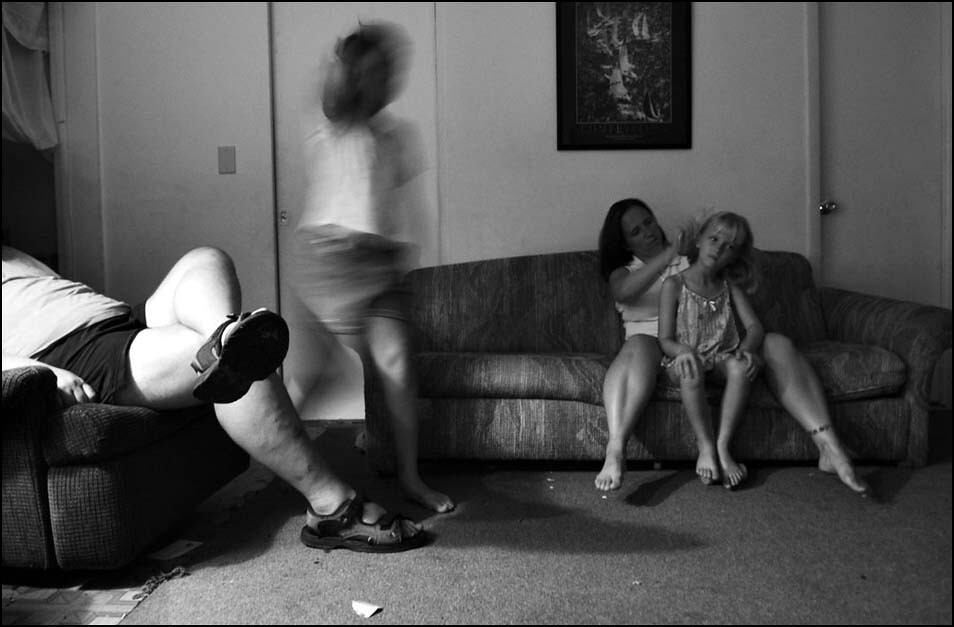
The hardest obstacle was getting a hold of them.
I think at one point I hadn't been out to visit them
in a week or so, and I dropped by to say hi and they
were gone.
Luckily, I was able to track them down again through
a church group that they'd been working with. That
was the nature of their lives, though, at the time,
constantly in transition and in chaos.
I knew when things were going astray and they were
being moved from one transitional housing center to
the next, picking up the phone to call a photographer
wasn't always a top priority (nor should it have been).
Everything went pretty smoothly, the only really
bureaucracy I faced was when I had to explain to
the school officials why I was interested in photographing
one of the kids in class.
They finally agreed, because they had a lot of kids
in similar situation, and they let me in.
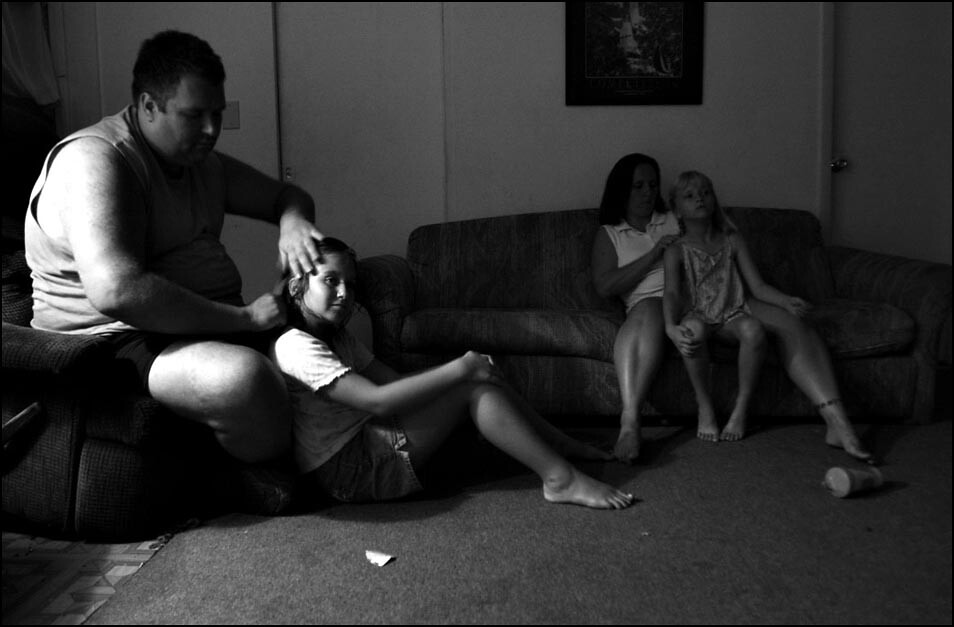
TID:
This was relatively early in your career, can you talk
about how this project impacted you as you started working on it?
MELISSA:
It was a year into my first staff job, and it was the biggest
story I had worked on. I think I made a lot of mistakes,
I learned and grew a lot from them, and it impacted me
greatly, by solidifying that this was what I really wanted to
do with my career. For me, the real power I gained came
from going beyond the daily assignment, in recognizing
the potential that something bigger was there beyond just
the tip of the iceberg that I was initially told to photograph.
It taught me to question things more, to follow my curiosities
and to trust my instincts.
Most importantly, it taught the importance of being a
photojournalist, not just a photographer.
TID:
In closing, what advice would you give to photographers
who want to dig deeper and build better access with
the people they are photographing?
MELISSA:
I'd say the most important thing is to approach stories
and your subjects with an open mind and not let
stereotypes or your own insecurities shape the story you're telling.
I can't stress enough the value of having an honest
conversation with people about why you're there, what
you want to be there for, and asking them what's important
for you to photograph in order to tell their story fairly and honestly.
I've found that the best told stories are ones when there's
somewhat of a partnership between you and your subjects.
What this story taught me, and what I've carried with me
into every other story I've done since, is that ultimately it's
not your story - it's their story.
You have to respect that and let your subjects guide you through it.
Melissa Lyttle is a staff photographer at The St. Petersburg Times,
and founder of:
www.aphotoaday.org
You can view her intimate, award-winning work at:
www.melissalyttle.com
+++++++++
Next week on TID, we'll spotlight this image:
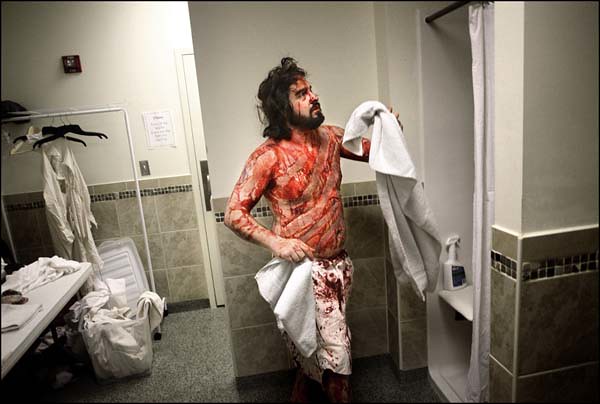
And, as always, if you have a suggestion of someone, or an image you
want to know more about, contact Ross Taylor at: ross_taylor@hotmail.com.
For FAQ about the blog see here:
http://imagedeconstructedfaq.blogspot.com/

No comments:
Post a Comment